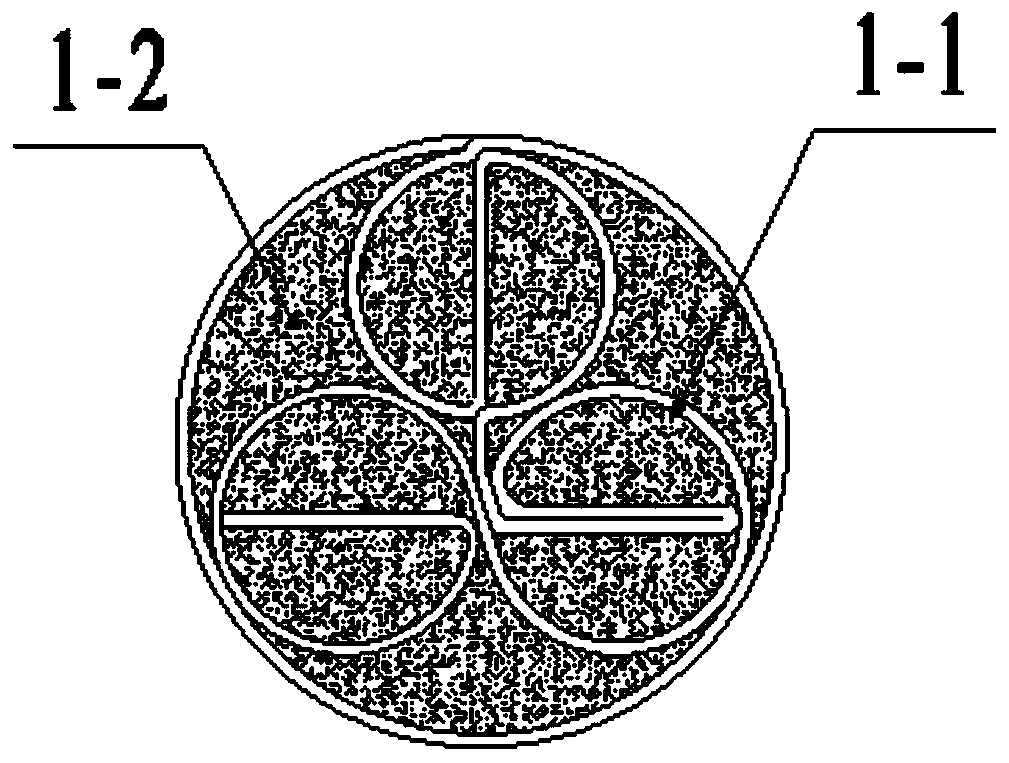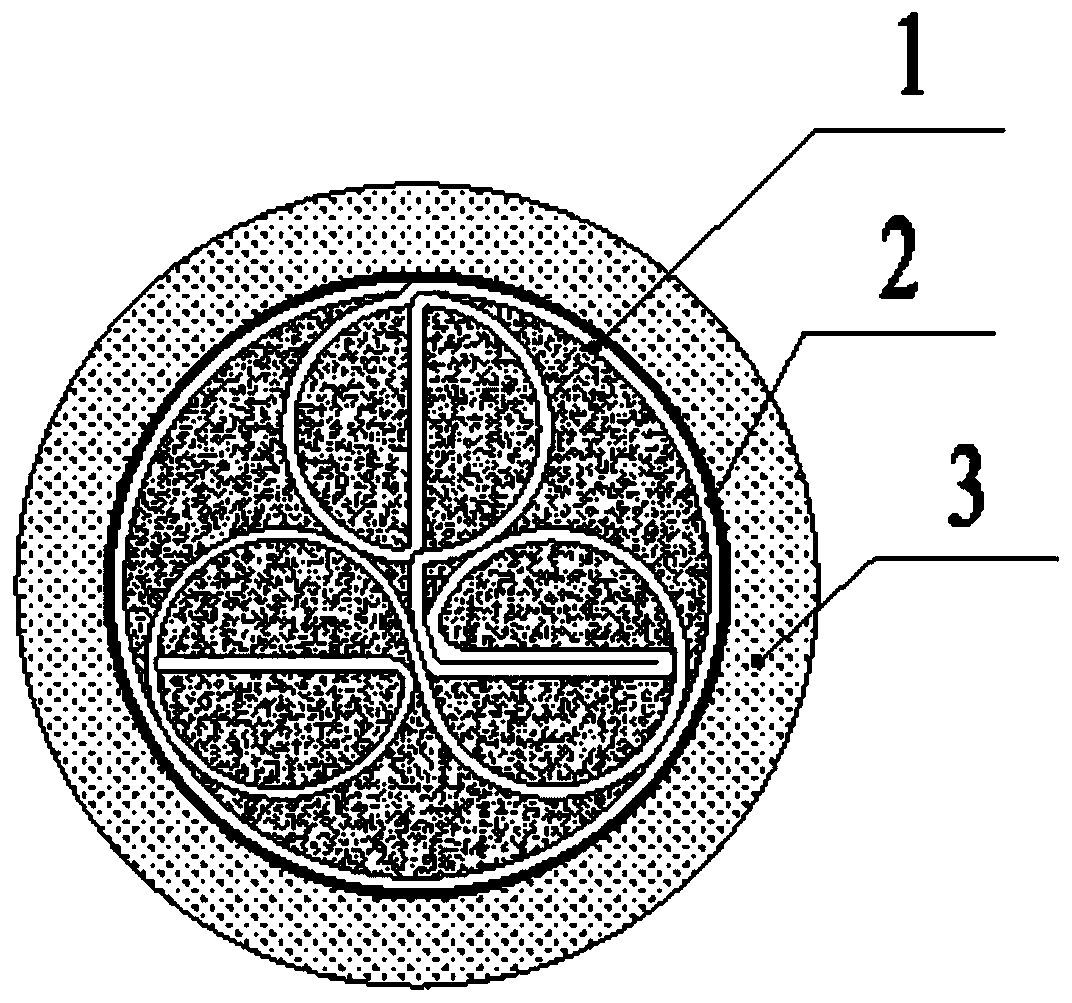Flux-cored welding rod for stainless steel welding
A technology of stainless steel and medicine, which is applied in the direction of welding medium, welding equipment, welding/cutting medium/material, etc., can solve the problems of mechanical property degradation of welded joints, arc instability, melt-through, etc., and achieve enhanced anti-redness and cracking performance , Improve the comprehensive mechanical properties, improve the effect of strength and hardness
- Summary
- Abstract
- Description
- Claims
- Application Information
AI Technical Summary
Problems solved by technology
Method used
Image
Examples
Embodiment 1
[0029] To prepare the flux-cored electrode for stainless steel welding of the present invention, the composition of the nickel belt layer is calculated by mass percentage: copper 23%, manganese 2.1%, iron 3.2%, and the remainder is nickel; the composition of the flux core is calculated by mass percentage: 32% of chromium, 2.2% of molybdenum, 2.5% of titanium, 1.2% of silicon, 3.2% of modified potassium titanate, 1.5% of cerium oxide, and the balance is iron. The composition of the modified potassium titanate is calculated by mass percentage: titanium dioxide 32%, potassium carbonate 56%, and the balance being pyrophyllite ore powder; the thickness of the nano-graphene coating is about 10nm.
Embodiment 2
[0031] To prepare the flux-cored electrode for stainless steel welding of the present invention, the composition of the nickel belt layer is calculated by mass percentage: copper 26%, manganese 2.6%, iron 3.8%, and the remainder is nickel; the composition of the flux core is calculated by mass percentage: 38% chromium, 3.0% molybdenum, 3.0% titanium, 1.8% silicon, 4.5% modified potassium titanate, 2.5% cerium oxide, and the balance is iron. The composition of the modified potassium titanate is calculated by mass percentage: titanium dioxide 34%, potassium carbonate 59%, and the balance being pyrophyllite ore powder; the thickness of the nano-graphene coating is about 20nm.
Embodiment 3
[0033] To prepare the flux-cored electrode for stainless steel welding of the present invention, the composition of the nickel belt layer is calculated by mass percentage: copper 24%, manganese 2.3%, iron 3.6%, and the remainder is nickel; the composition of the flux core is calculated by mass percentage: 35% chromium, 2.6% molybdenum, 2.7% titanium, 1.5% silicon, 3.8% modified potassium titanate, 2.0% cerium oxide, and the balance is iron. The composition of the modified potassium titanate is calculated by mass percentage: titanium dioxide 33%, potassium carbonate 58%, and the balance being pyrophyllite ore powder; the thickness of the nano-graphene coating is about 15nm.
PUM
| Property | Measurement | Unit |
|---|---|---|
| thickness | aaaaa | aaaaa |
| electrical resistivity | aaaaa | aaaaa |
| electrical resistivity | aaaaa | aaaaa |
Abstract
Description
Claims
Application Information
 Login to View More
Login to View More - R&D
- Intellectual Property
- Life Sciences
- Materials
- Tech Scout
- Unparalleled Data Quality
- Higher Quality Content
- 60% Fewer Hallucinations
Browse by: Latest US Patents, China's latest patents, Technical Efficacy Thesaurus, Application Domain, Technology Topic, Popular Technical Reports.
© 2025 PatSnap. All rights reserved.Legal|Privacy policy|Modern Slavery Act Transparency Statement|Sitemap|About US| Contact US: help@patsnap.com



